LG C5 OLED vs Samsung S90F: Which Mid-Range OLED TV is Right for You?
Which of these two popular OLED TVs is the one to buy in 2025?
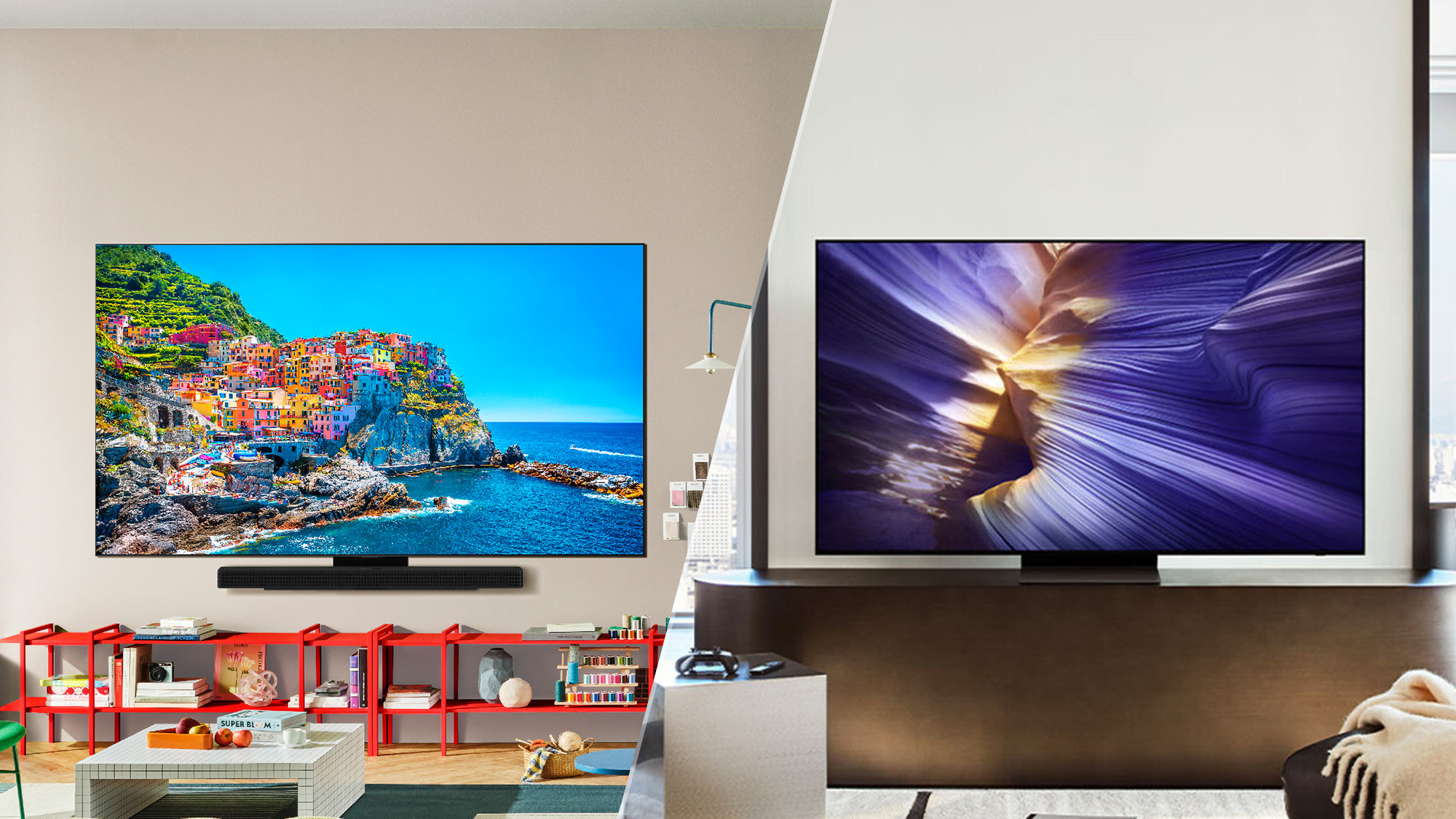
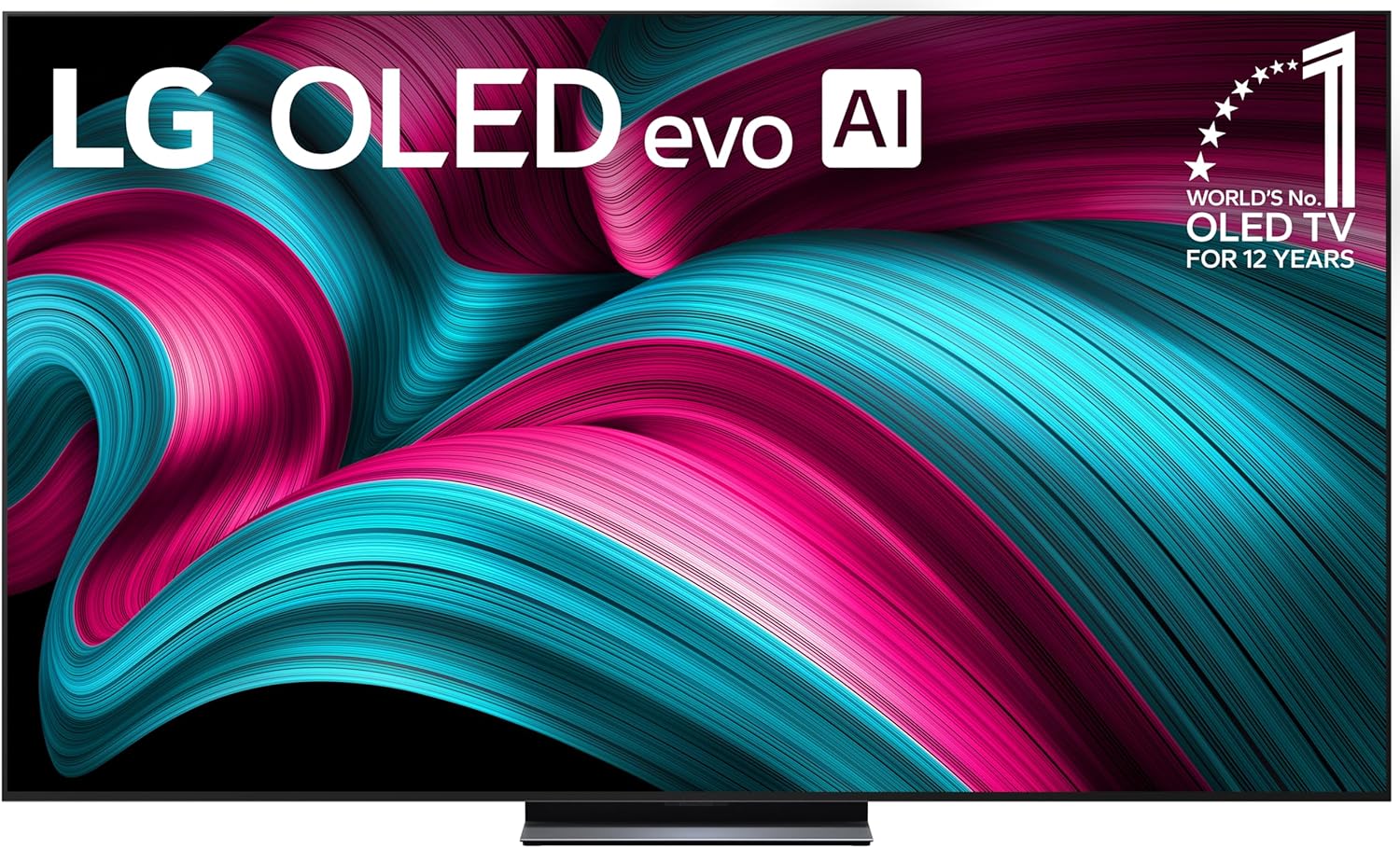
The C5 is LG's mid-range OLED in 2025. It delivers an incredible picture, a thorough collection of gaming enhancements and plenty of additional features.
Pros
- Terrific HDR brightness
- Class-leading gaming features
- Dolby Vision support
Cons
- No ATSC 3.0 support
- Isn't as colorful as the competition
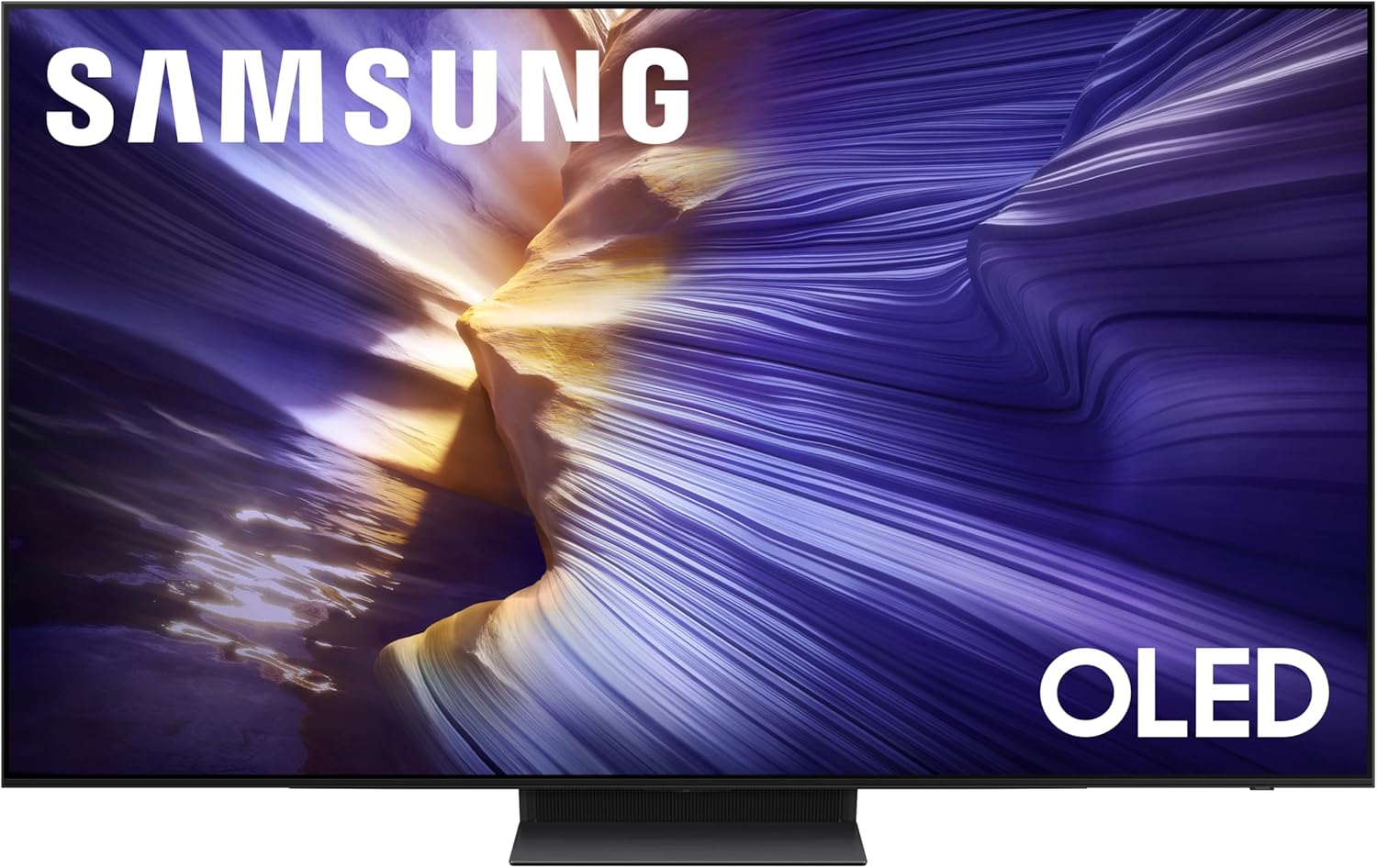
Samsung's S90F might not be the flagship OLED, but it still offers some incredible performance for the price. It also has a range of gaming features, including Samsung's Gaming Hub.
Pros
- Excellent color volume on some models
- Bright in SDR and HDR
- Superb gaming support
Cons
- Quantum dot-color not available on all models
- No ATSC 3.0 support
The LG C5 OLED remains one of our favorite TVs for its price-to-performance ratio, but when it's up against Samsung's S90F OLED, things get interesting.
Both OLED TVs are practically identical. They sit in the middle of their respective lineups and offer about the same in terms of performance specs. But they do have some notable differences to consider.
They're two of the best OLED TVs of 2025, so it's an even fight. Read on below to see which is the best pick for you.
LG C5 vs Samsung S90F: Specs compared
| Header Cell - Column 0 | LG C5 | Samsung S90F |
|---|---|---|
Sizes | 42", 48", 55", 65", 77", 83" | 42", 48", 55", 65", 77", 83" |
Ports | 4x HDMI 2.1 | 4x HDMI 2.1 |
Resolution | 3,840 x 2,160p | 3,840 x 2,160p |
Refresh rate | 144Hz | 144Hz |
HDR | Dolby Vision, HDR10, HLG | HDR10, HDR10+, HLG |
Smart TV software | webOS | Tizen OS |
ATSC 3.0 support? | No | No |
Processor | a9 AI Processor 4K Gen8 | NQ4 AI Gen3 processor |
LG C5 vs Samsung S90F: Design
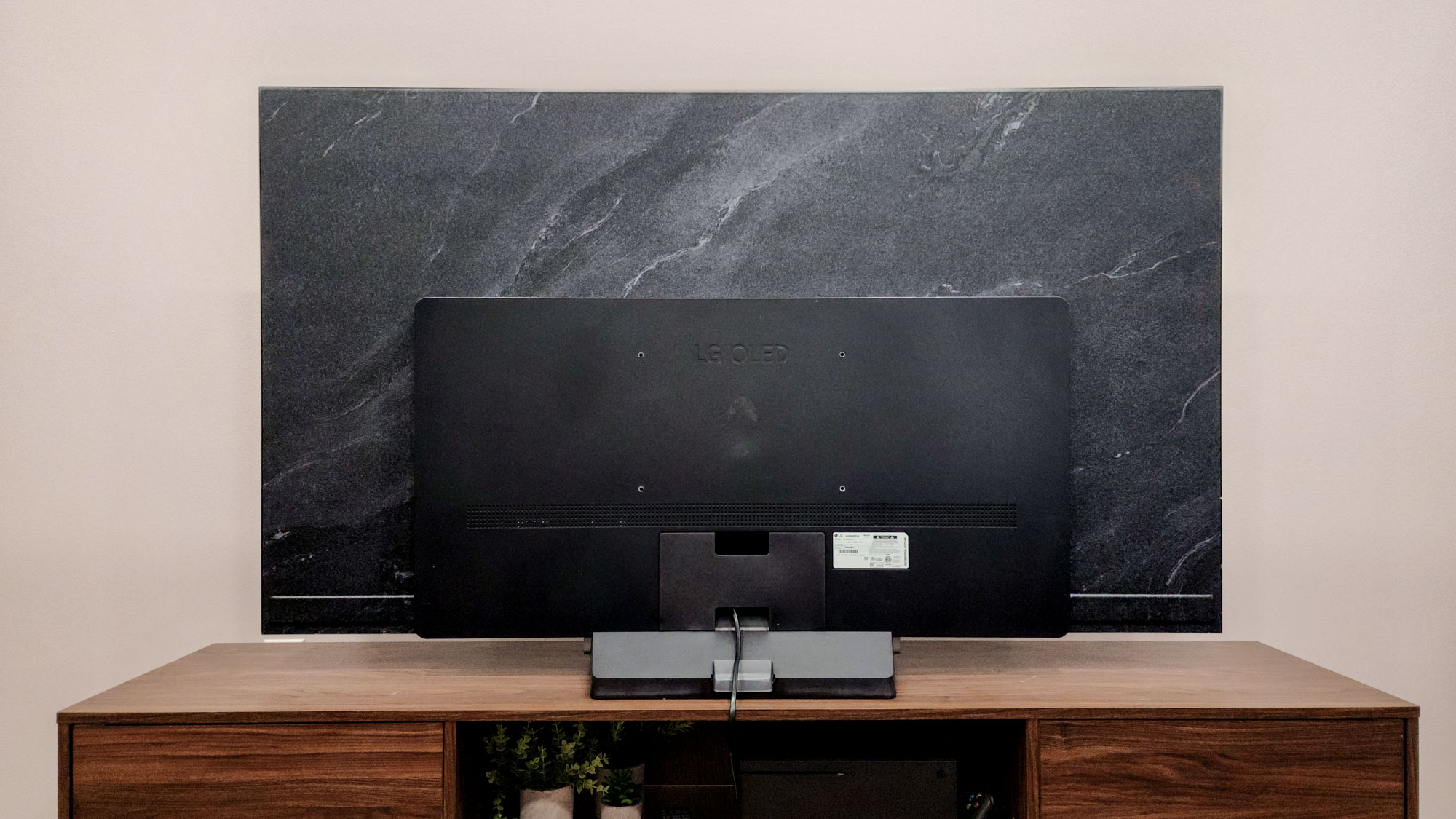
At just 1.8 inches at their thinnest, these TVs almost like a framed photos when mounted to the wall. They do differ slightly in weight, with the C5 coming in at 40.8 pounds without the stand against the 49.6 pounds on the S90F.
While the flagship LG G5 OLED leverages a new tandem RGB panel, the C5 still uses its tried-and-true WOLED from previous generations. You'll also find the same WOLED panel on the S90F in its 42-inch, 48-inch and 83-inch configurations.
The other sizes in the S90F series leverage a QD-OLED panel, which fuses quantum dots with a pure blue OLED light source. This is what gives the S90F serious performance gains in color while also maintaining its perfect blacks and contrast. But, seeing as these advantages don't extend to SDR, not every buyer will get to experience them.
You can expect both OLEDs to have middling audio support: The S90F sports a 40W 2.1-channel speaker while the C5 ups the ante with a 40W 2.2-channel system.
Get instant access to breaking news, the hottest reviews, great deals and helpful tips.
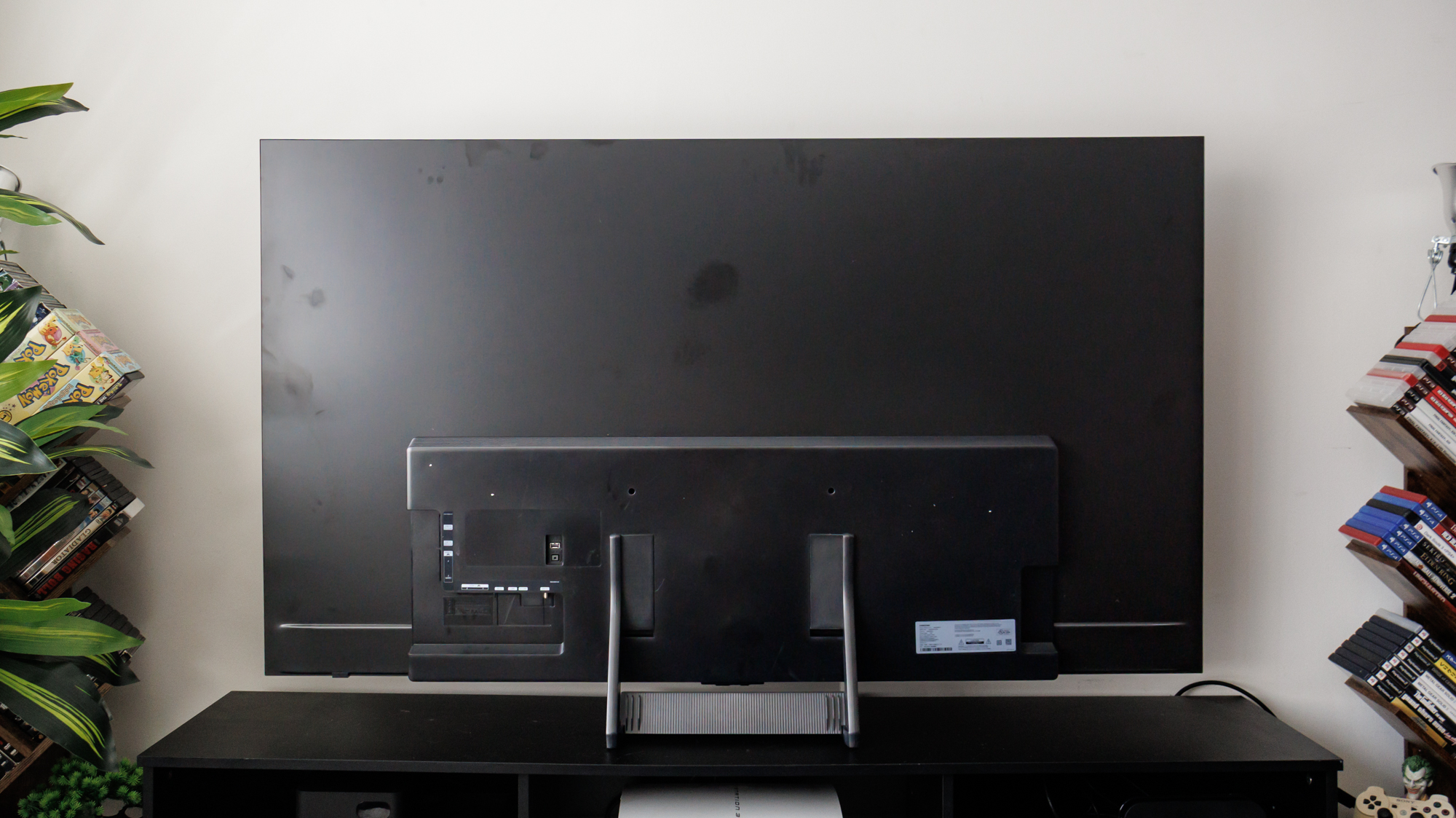
Both the S90F and LG C5 have easy-to-install pedestal stands, making them easy to place on any surface, however the C5's does seem a bit more premium thanks to its brushed-metal polish and snap-on cable management piece.
While the S90F does not come equipped with any special anti-glare screen or coating, the LG C5 does have it on sizes larger than 55 inches. This is an especially important distinction if you plan on putting your TV in a room with lots of ambient light.
Overall, it's close, but the S90F loses the race given its panel distinctions, sub-optimal speaker, and no anti-glare coating.
Winner: LG C5
LG C5 vs Samsung S90F: Performance
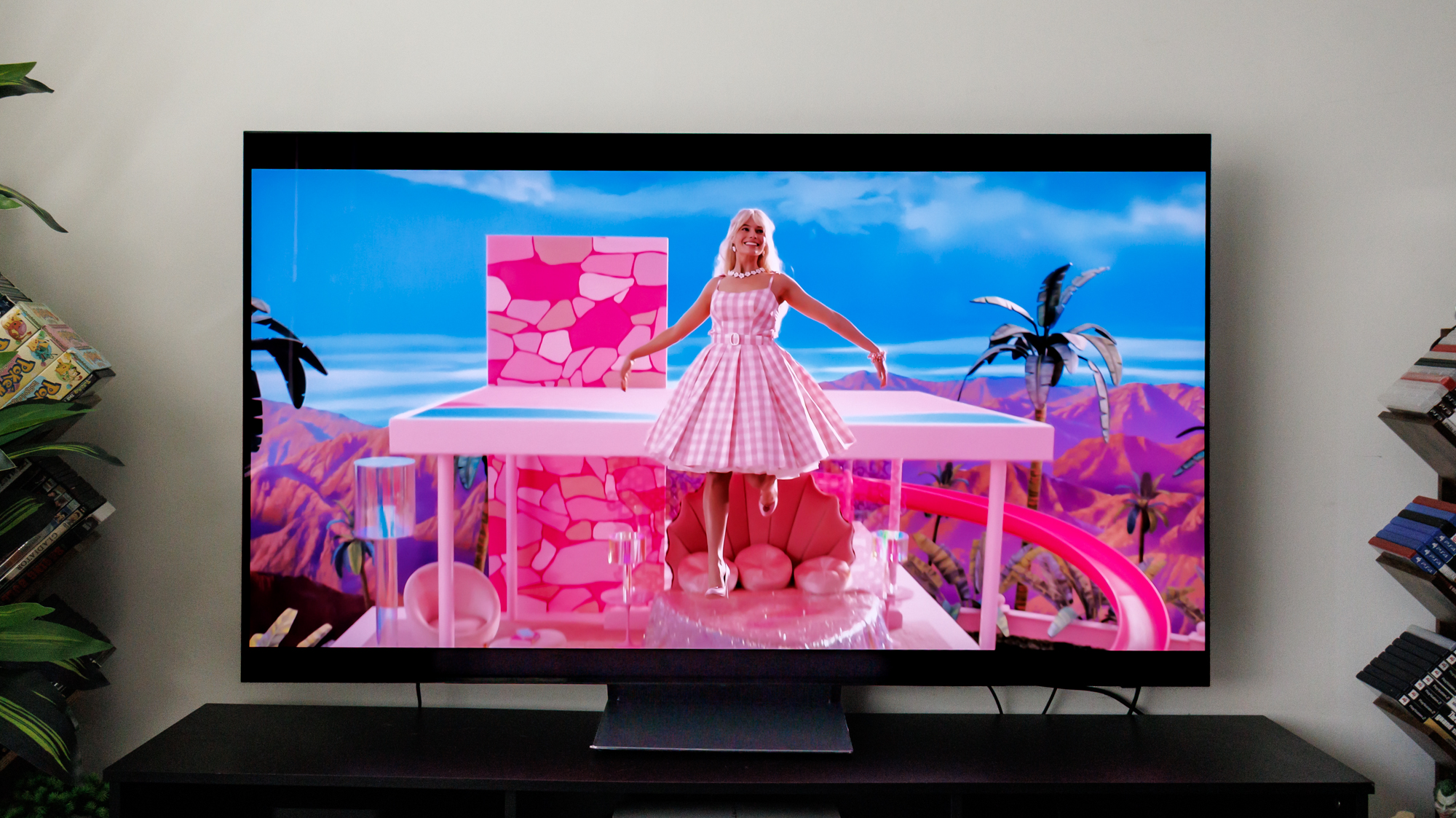
| Header Cell - Column 0 | LG C5 | Samsung S90F |
|---|---|---|
SDR Brightness (10%, in nits) | 334 | 520 |
Delta-E (lower is better) | 1.2 | 1.1 |
HDR Brightness (10%, in nits) | 1,179 | 1,162 |
UHDA-P3 Gamut Coverage | 99.30% | 100% |
Rec. 2020 Gamut Coverage | 76.31% | 89.03% |
Input latency (milliseconds) | 9.1 | 9.1 |
It's evident from these metrics just how close these OLED TVs are in terms of performance. They both share nearly the same exact HDR brightness, color accuracy, and input latency.
There are some notable differences, especially when you look at HDR color coverage. While the Samsung S90F might drop Dolby Vision in favor of HDR10+, it's still equipped with much higher color coverage in HDR (and some of the highest in our testing overall).
Not only does the S90F have 100% coverage of the UHDA-P3 gamut, mirroring the Sony Bravia 8 II OLED, it also hits just a bit over 89% of the Rec. 2020 gamut. Bear in mind, however, that these test results are associated with a quantum dot-enhanced version of the S90F, not the 42-inch, 48-inch and 83-inch models.
The S90F is also brighter in SDR, so on average, everyday content will look brighter on the S90F.
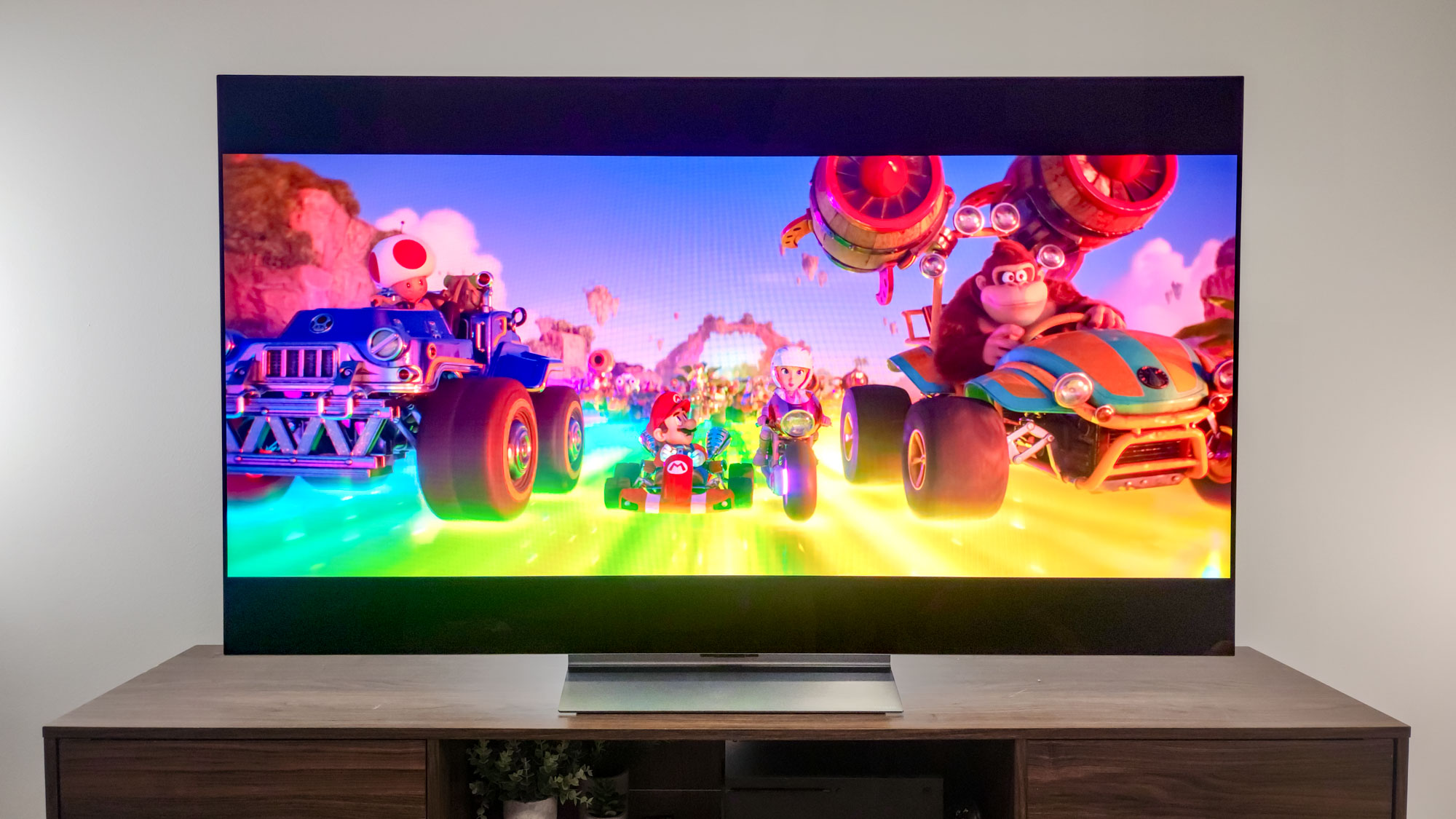
The LG C5 OLED is no slouch, though — we gave it a perfect five star rating, after all. Having better highlight brightness in HDR definitely gives it a slight edge, as it makes HDR movies and shows really pop.
Both TVs are on equal footing in the gaming department. It's hard to give either the win in this category, given that they both have super low input latency at just 9.1ms, but also come equipped with four HDMI 2.1 ports and a 144Hz refresh rate via VRR.
One thing to consider when deciding between the two are their enhanced HDR formats. Like all Samsung TVs, the S90F doesn't support Dolby Vision, the most popular format of its type. Instead, it supports HDR10+, a royalty-free option that operates in largely the same manner. While I do think the S90F has some incredible color coverage in HDR, the lack of Dolby Vision is a big miss for folks who want that HDR format in their toolbelt.
Nevertheless, both of these OLEDs are stunning.
Winner: Tie
LG C5 vs Samsung S90F: Smart platform and features
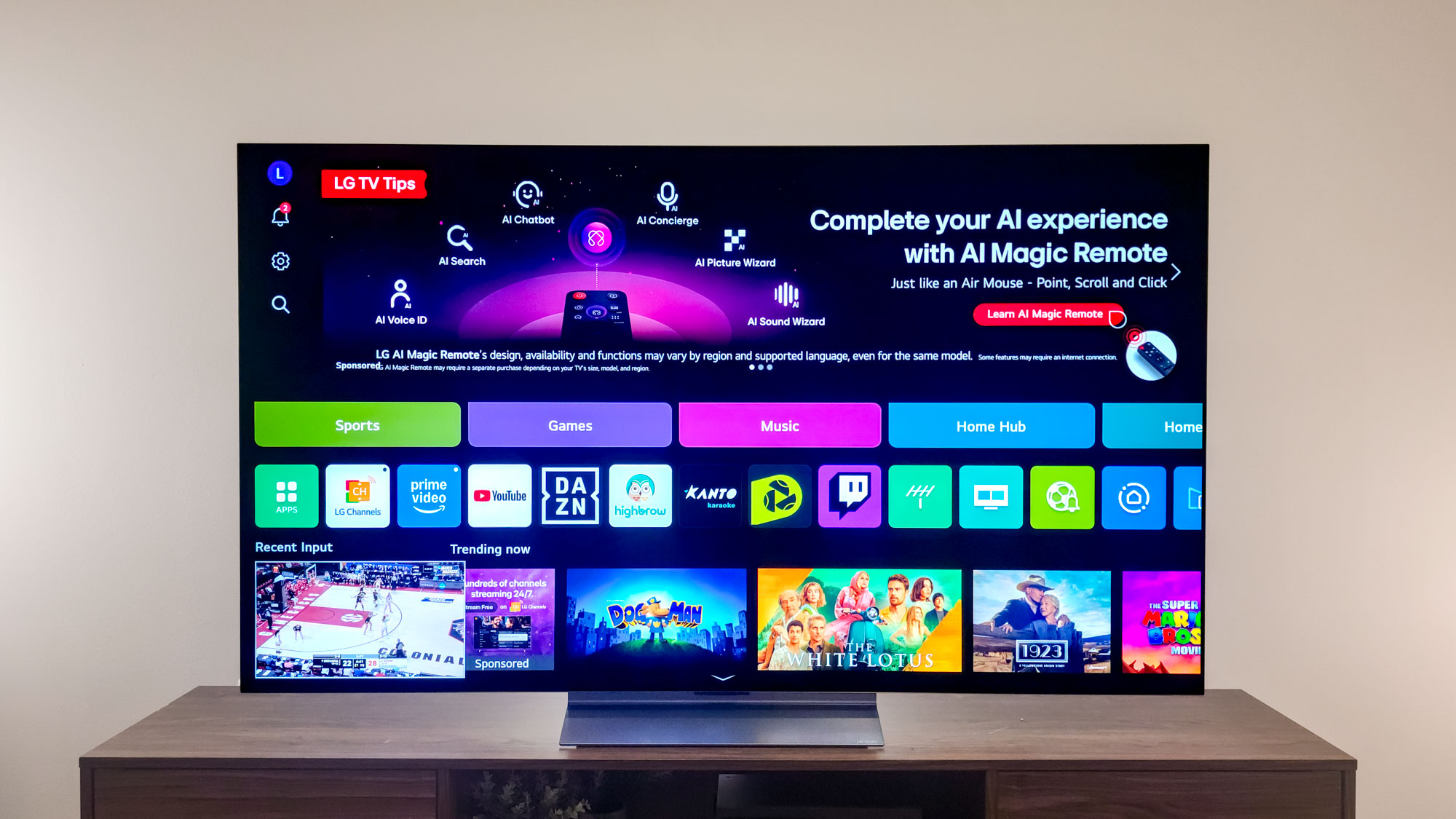
The C5 and S90F run on completely different interfaces, but they're fairly similar.
LG's OLED runs on webOS. Mirroring Roku and Google, LG has its own list of free channels to enjoy, aptly called LG Channels. You can dive into these for everything from news to sports, and so much more, all ad-supported and totally free.
Samsung's Tizen OS also offers a similar list of free channels to enjoy at no cost, and it regularly updates these with a host of awesome content. Called Samsung TV Plus, these feeds offer you loads of free content, like various seasons of Pokémon, comedy-focused channels, sports and more.
You'll also find easy access to gaming through both individual interfaces. Samsung calls it Gaming Hub while LG's is called Gaming Portal, both of which offer you access to several cloud gaming services. These include Xbox Game Pass, Nvidia GeForce Now, Amazon Luna and more.
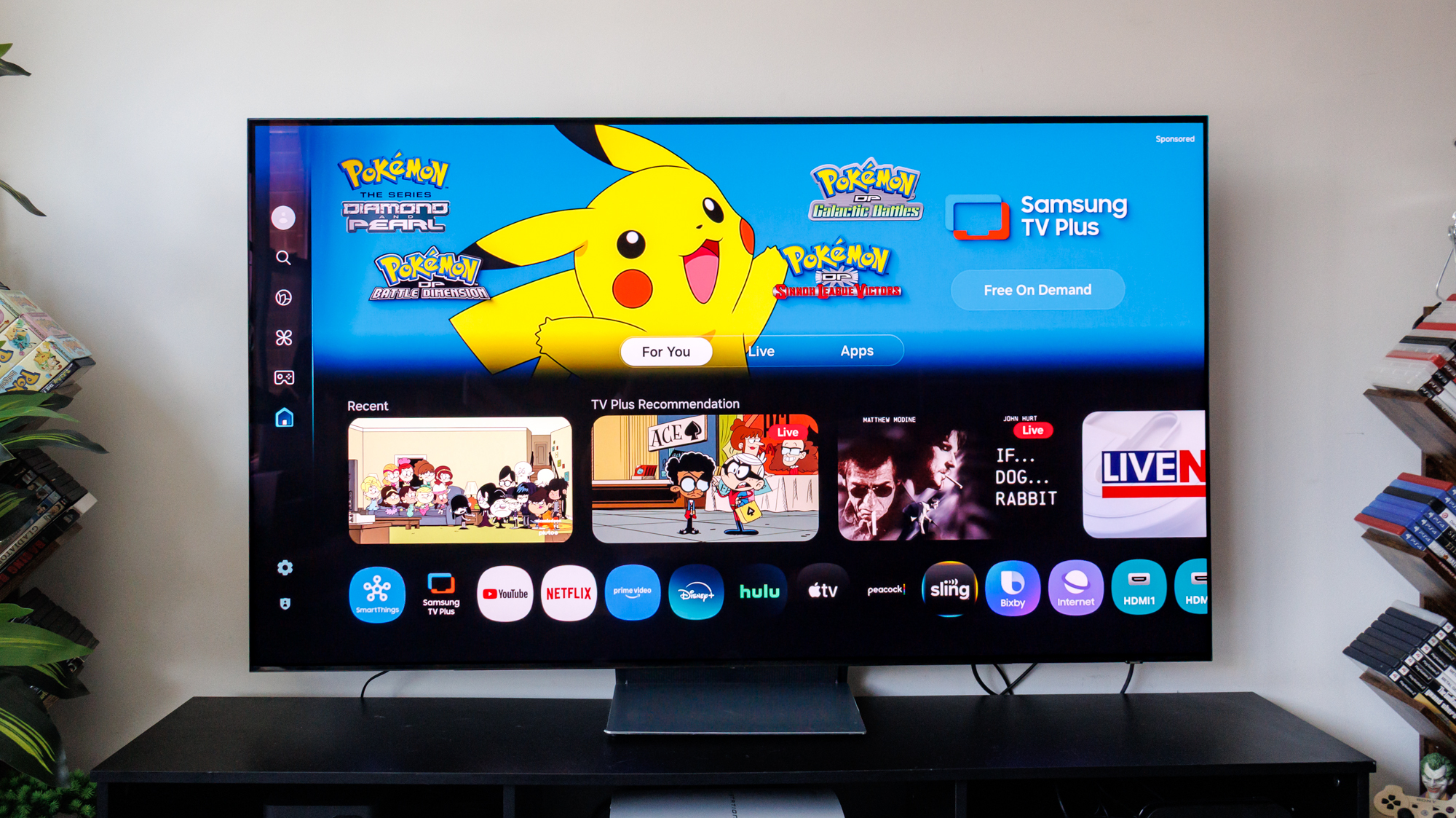
LG and Samsung have also committed to upgrading their independent TV interfaces over a set number of years. You'll get a bit more life out of the S90F, as Samsung will update Tizen OS for up to seven years. LG, on the other hand, has committed to a five year upgrade path for webOS, meaning the LG C5 will see prolonged updates up to 2030.
We've touched on a few of the features these TVs have and don't have, but let's go over them once more. The two trade off in HDR support, meaning the C5 has Dolby Vision and HDR10, but no HDR10+, while the S90F supports HDR10+ and HDR10, but not Dolby Vision.
The two OLEDs also share the same refresh rate of 120Hz native and up to 144Hz in VRR. While that's not quite as high as the 165Hz found on some flagship OLEDs this year, or even what Hisense is offering in its U8QG and U7QG, that's more than enough for most gamers.
Neither TV features an ATSC 3.0 tuner, so they won't be able to receive 4K broadcasts and Nextgen TV. While a bit of a letdown, it definitely shouldn't sway your overall opinion of either set.
Both Tizen OS and webOS offer very similar experiences, and aside from HDR support, both TVs are almost identical in terms of features. You can't go wrong with either option when looking at just software alone.
Winner: Tie
LG C5 vs Samsung S90F: Verdict
| Header Cell - Column 0 | LG C5 | Samsung S90F |
|---|---|---|
Specs (25) | 23 | 23 |
Design (25) | 24 | 23 |
Performance (25) | 24 | 25 |
Features (25) | 23 | 23 |
Total Score (100) | 94 | 94 |
I can't lie: This was a tough one. The LG C5 is an incredible bargain, offering tons of value and plenty of features. However, the S90F is just as enticing, especially if you opt for one of the quantum dot-enhanced versions.
In the battle between these two titans, however, the C5 has the S90F beat, largely due to its anti-glare coating and Dolby Vision support. Plus, the C5 is typically cheaper. We're in the midst of some serious Fall sales at the time of writing, but the 65-inch LG C5 is currently $1,496 on Amazon, while the Samsung S90F is $100 more expensive.
That said, if you prefer HDR10+ content, prefer Tizen OS over webOS and want slightly better HDR color performance, get the Samsung S90F instead.
More from Tom's Guide
- LG G5 OLED TV review
- Samsung S95F OLED TV review
- This new TV breakthrough looks like a game-changer for OLED TVs

Ryan Epps is a Staff Writer under the TV/AV section at Tom's Guide focusing on TVs and projectors. When not researching PHOLEDs and writing about the next major innovation in the projector space, he's consuming random anime from the 90's, playing Dark Souls 3 again, or reading yet another Haruki Murakami novel.
You must confirm your public display name before commenting
Please logout and then login again, you will then be prompted to enter your display name.
